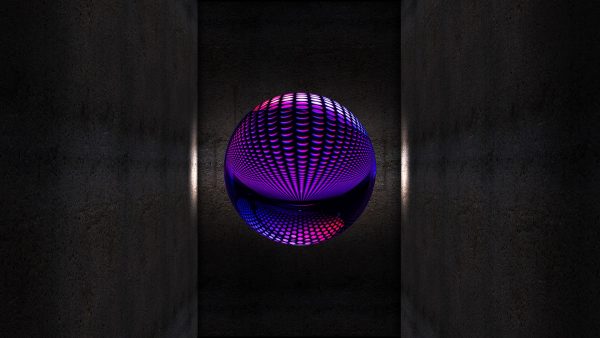Einsteigerguide: Einführung in Rastergrafiken.
Wenn Sie als Grafik- oder Webdesigner arbeiten möchten, müssen Sie sich mit Raster Graphics beschäftigen. Aus diesem Grund möchten wir ihnen in dem folgenden Beitrag die Grundlagen von Rastergrafiken vermitteln, um ihnen eine kurze Einführung in die Thematik zu bieten.

Raster Bilder.
Rasterbilder, auch Rastergrafiken oder Bitmap-Bilder genannt, bestehen aus Pixeln. Pixel sind winzige farbige Quadrate oder Punkte, die zusammen größere Grafiken bilden, sie sind die Bausteine von Bildern. Pixel sind individuell bearbeitbar und werden entweder in Punkten pro Zoll (ppi) oder Punkten pro Zoll (dpi) ausgedrückt. Mit einem Bildbearbeitungsprogramm wie Photoshop können Sie einzelne Pixel heranzoomen, sehen und sogar bearbeiten. Sobald Sie wieder herauszoomen, steuert die ppi oder dpi, wie hoch die Auflösung des endgültigen Bildes ist, die Auflösung bezieht sich einfach auf die maximale Anzahl von Pixeln pro Bild. So wird beispielsweise ein sechs Zoll großes quadratisches Bild mit einer Auflösung von 400 dpi oder ppi durch 5.760.000 Pixel ausgedrückt. Das sind 400 Zoll für 160.000 pro Quadratzoll, mal 36 für das gesamte Stück. Normalerweise sind Online-Bilder 72ppi, während Druckbilder etwa 300ppi sind. 600ppi gilt als ein sehr hochauflösendes Bild, bei dem es unmöglich ist, Rasterbilder zu vergrößern, ohne Informationen zu verlieren. Das passiert, wenn man bestehende Bilder vergrößert und sie „verpixelt“ oder unscharf aussehen lässt. Andererseits können sehr große, hochauflösende Bilder schwierig zu bearbeiten sein. Sie können die Arbeit in einem Zeichenprogramm mit vielen Ebenen komplizierter machen und den Computer verlangsamen. Dennoch hat das Freihandzeichnen mit Rastergrafiken einen natürlicheren Charakter als die Vektorgrafik und ist dem Zeichnen auf Papier ähnlicher: Digitale Fotos sind Rasterbilder, ebenso wie die Bilder der meisten Freihandzeichnungsprogramme. Einige der häufigsten Arten von Rasterbilddateien sind gif, jpg, png, psd und tiff. Zu den Programmen, mit denen Sie Rasterbilder erstellen können, gehören Gimp, Photoshop oder Sketchbook.
Wie sich Rasterbilder entwickelt haben.
In der Mitte des 19. Jahrhunderts wurden die ersten Computer-Bildschirme entwickelt. Technisch gesehen funktionierten sie ähnlich wie Fernseher, die Elektronenstrahlen von links nach rechts und von oben nach unten scannten, um bewegte Bilder zu erzeugen. Die ersten Beispiele dieser Grafiken, wie sie beispielsweise in den ersten Computerspielen verwendet wurden, bestanden aus Pixel Art. Dank der damals möglichen niedrigeren Auflösungen waren die Pixel sichtbar, was Spielen wie Pac Man und Space Invaders einen etwas kräftigeren Look verlieh. Aktuell vebreitet sich eine neue Welle der Nostalgie und wurde in Filmen wie Wreck-it Ralph gefeiert.
Praktische Tipps zur Verwendung von Rasterdateien.
Die meisten digitalen Zeichnungen, digitalen Paintings, Illustrationen und Fotoprogramme sind Rasterprogramme. Scanner erstellen Rasterbilder. Tatsächlich sind die meisten Online-Kunstwerke Raster- oder gerasterte Vektor-Kunstwerke. Die Vorteile von Rastergrafiken liegen darin, dass sie im Vergleich zu Vektorbildern am ehesten wie Freihandzeichnungen aussehen und sich anfühlen. Es gibt auch eine flache Lernkurve, da die meisten Menschen lernen können, relativ schnell mit Rastergrafiken zu arbeiten. Sie können Dateien öffnen, ansehen und Pixel bearbeiten, wenn Sie möchten. Wenn Sie Bilder vergrößern, können sie verpixelt erscheinen, besonders wenn Sie ein Bild mit vielen glatten Linien haben. Um dieses Problem zu beheben, sollten Sie die Anti-Aliasing-Technik verwenden. Verwischen Sie die Pixel auf der gekrümmten Linie, um sie zu glätten und kommen Sie mit dem Erscheinungsbild einer weniger zerklüfteten Linie an. Ein weiterer Nachteil der Rastergrafik ist, dass Sie sie in vielen Fällen nicht vergrößern können. Wenn Sie Logos oder detaillierte Grafiken erstellen müssen, die vergrößert werden sollen, können Sie mit Vektorgrafiken arbeiten – seien Sie einfach auf eine steile Lernkurve vorbereitet.
Schlußfolgerungen.
Rastergrafiken sind überall online und jeder, der im Web- oder Grafikdesign arbeitet, muss sie beherrschen. Rasterbilder bestehen aus Pixeln, die Informationen ausdrücken und sind heute online in Form von digitalen Fotos und anderen Bildern sehr verbreitet. Obwohl sie ihre Grenzen in Bezug auf Vergrößerung und Pixelbildung haben, eignen sich Raster Graphics hervorragende für Designer und Künstler, die digitale Kunst erschaffen und gleichzeitig das Gefühl der Freihandarbeit bewahren möchten.
Vielen Dank für ihren Besuch.


